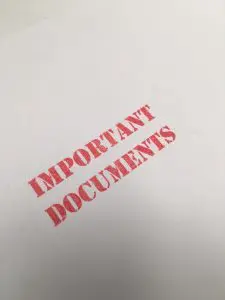SAI caught up with SAI Visa Director Rose Maier, who has provided some helpful tips on the student visa process.
I have been the Visa Director at SAI for fourteen years and have seen and heard a million stories from students that have made me laugh and cry. Like the time a student camped out overnight in front of the San Francisco Italian Consulate in order to get in the following morning to submit their visa application. This, of course, was before the amazing invention of the appointment system. For some, I think the move to appointments has been bittersweet and maybe the option to camp out would be preferred, as students are always struggling to obtain the holy grail of studying abroad: the Elusive Student Visa Appointment. There was also the time a student said that he didn’t get a visa because he already had a Mastercard. So this leads me to the main idea of this post: ways students run into trouble with getting their visa.

Image courtesy of Pixabay
#1 Appointments
I put this as #1 because in most cases this is the #1 roadblock students face. In itself, the appointment is benign. It is when students finally decide to actually make this appointment that runs havoc in the lives of families. These appointments fill up fast, so when these fill up, students must wait for new time slots to open up, which means checking the Consulate’s website daily. I know this is one of the hardest things to endure. We live in a time when things move fast, so we are accustomed to getting what we want, when we want it. I call this the nail biting stage as students wait for a date to appear. Eventually, all U.S citizens get an appointment and do obtain their visa.

The Trastevere neighborhood of Rome Photo courtesy of John Cabot University
Appointments – Part II Honorary Consulates
I wanted to put this in as a fix-it for the above roadblock: “roadside assistance” so to speak. The Honorary Consulate is the greatest gift to mankind since the beginning of time. Well, not really, but sometimes it is an answer to the cry “I can’t get an appointment and the only available time is after my program starts.” And then there’s the sobbing of “I’ve waiting my whole life to study abroad and now I can’t cause I can’t get an appointment.” Fortunately for these students there is an alternative solution.
Most Consulates have Honorary Consulates in alternative locations. Locations are listed on the Consulate’s website under Consular Network. These volunteers review the visa application and “notarize” the signature, allowing the entire application to then be mailed to the main Consulate to finish the process. So when there is no availability at the main Consulate, there is likelihood of seeing the Honorary Consulate.
#2 Misinformation
I can’t tell you how many times I have hear from families “the Smith Family up the street didn’t have to do any of this visa application stuff.” Or “my friend didn’t do this so I didn’t.” My answer is always “you can’t compare apples to oranges.” Sending students to study abroad in Europe can’t be compared to any other visa. In fact, Consulates can’t even be compared to one another from the same country. It’s too maddening to question the visa requirements and to try and make sense of the process. I suggest they get advice from SAI or their study abroad office. Not the random person at Starbucks.

Siena, Italy
#3 Not Reading Emails
When a student is accepted into an SAI program, they are immediately sent emails that spell out what they need to do to obtain a student visa. These emails are full of great information. I know students are juggling five things at any one time, so when those emails arrive I’m sure the thought is “oh, I have lots of time before I need to do this; I’ll read it later,” and time goes on. Which takes us back to #1 and now we’ve gone full circle. Oh dear!
I know that the visa process is overwhelming, scary, upsetting, etc. I always remind students (and their folks) to keep their eye on the goal. At the end of this procedure, they are now able to achieve their dreams of studying abroad. In reality, their study abroad experience started the moment they submitted their application to go abroad. This experience is full of life lessons and the learning starts before they even board an airplane. When students are distraught and have feelings of hopelessness, I tell them that they will look back at this time and have a good laugh with other students who went through that crazy rollercoaster ride as well. All students have their own study abroad story, and I think the misadventures of applying for a student visa enhances that story.


Comments
1 responses to “Student Visas: Top Three Application Pitfalls”
[…] Student Visas: Top Three Application Pitfalls […]